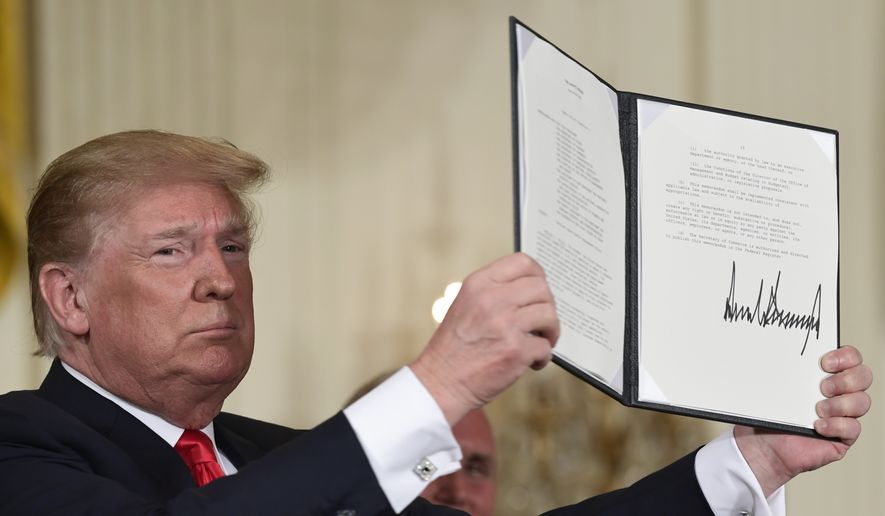President Trump’s proposal to create a Space Force as an independent branch of the U.S. military would cost up to $1.3 billion more than initially expected, according to a report this week by the Congressional Budget Office.
The administration’s proposal would require up to 9,700 new positions, increase the defense department’s annual costs by up to $1.9 billion, and could incur one-time costs of up to $4.7 billion, according to the CBO report released on Wednesday.
Alternatively, the report outlines how, if the Space Force were to be created as new service embedded within the current U.S. Air Force, it would cost slightly less in terms of manpower and funding. The CBO maintains such an approach would mean the Space Force could operate with just 4,100 to 6,000 personnel and increased annual costs of $820 million to $1.3 billion.
While the estimates point to significantly higher figures than the just $500 million that has thus far been projected by the Pentagon, the CBO steered clear of taking a position on the way forward. This week’s report “makes no recommendations,” said CBO Director Keith Hall.
Nonetheless, the cost projections come at a moment of debate and pushback from administration officials who argue the total cost of creating the Space Force is being overstated by critics.
Acting Defense Secretary Patrick Shanahan told lawmakers during a Senate Appropriations budget hearing Wednesday that exaggerated cost estimates have “detract[ed] from the real value of the Space Force.”
This week’s CBO report, meanwhile, examined the costs of the five potential space defense organizations including a Space Force placed under the Air Force, a Space Force as a separate military department, a combatant command, a Space Development Agency and a space policy directorate.
In February, President Trump signed a directive that set in motion a scaled-down version of his original proposal for the Space Force, to be housed within the Air Force, of which the vast majority of the Pentagon’s space operations already occur.
The administration has also proposed that the new agency have three organizations within it, including for operations, acquisition and development activities.
This week’s CBO report said its own estimates “probably represent the lower end of the range of possible costs” for the Space Force.
“The administration has provided few details about what the three organizations that it has proposed would look like or how large they would be,” the report said.
The Defense Department has requested $72 million for the Space Force in Mr. Trump’s proposed $750 billion FY20 defense budget. Defense officials have said that they expect the new force to be fully functional within five years.
Members of the Senate Armed Services Committee, who play the largest role on Capitol Hill in authorizing defense spending, have expressed skepticism of the imminent need to stand up the first separate new service for the U.S. military since 1947.
However, Mr. Trump, as well as Mr. Shanahan, have argued that the new force is needed to counter growing space-related threats from China, Russia, Iran and others, who are developing new weapons to interfere with satellites.
• Lauren Toms can be reached at lmeier@washingtontimes.com.




Please read our comment policy before commenting.